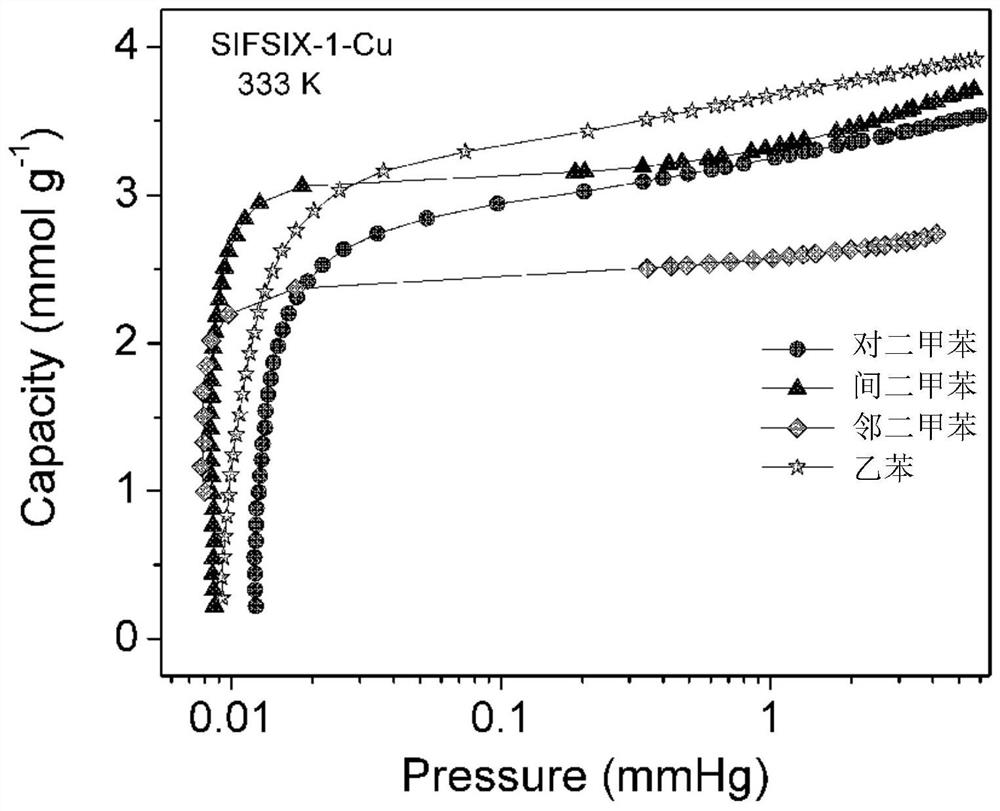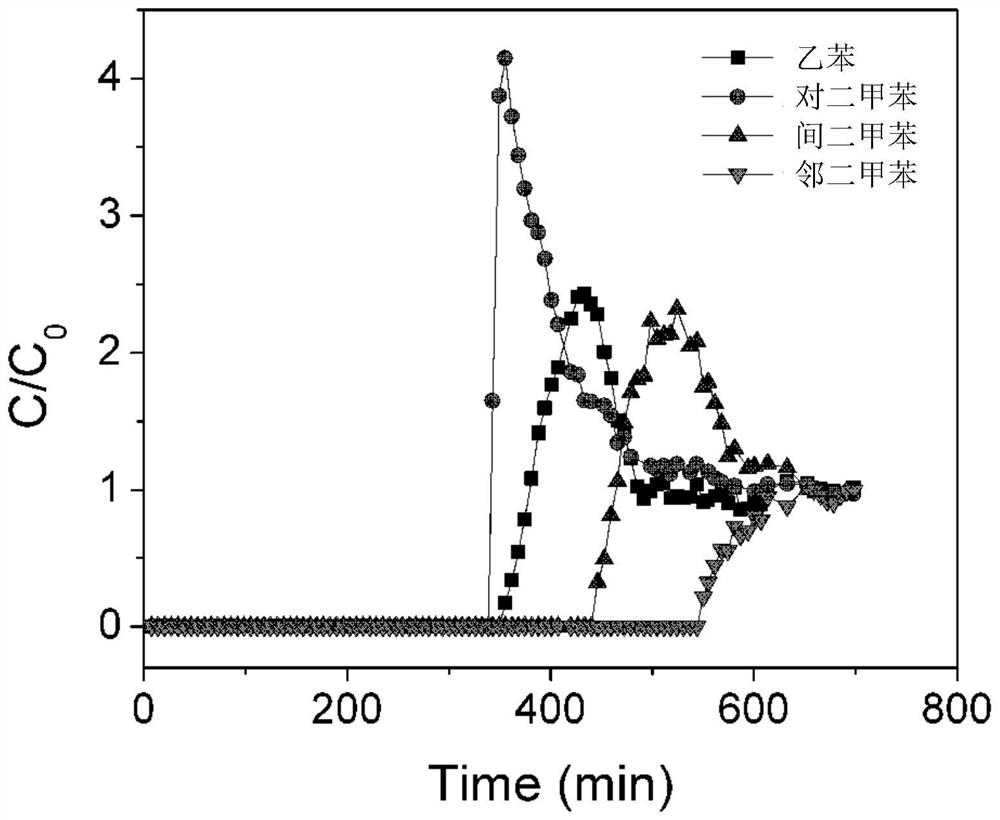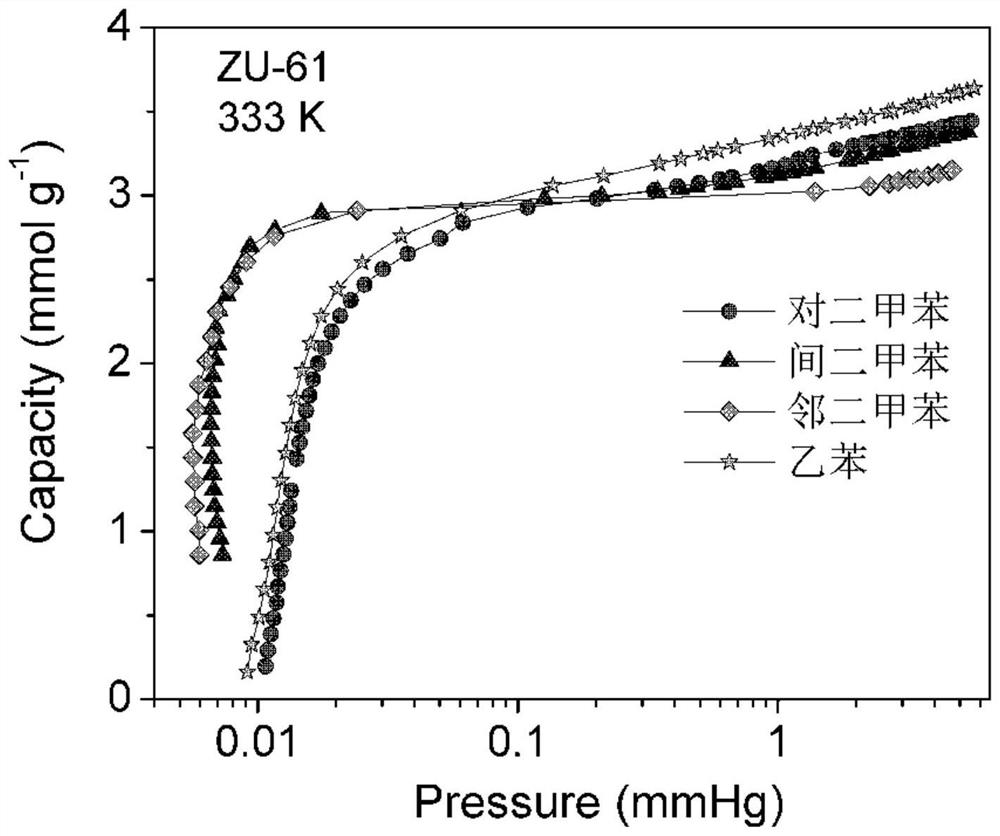A kind of separation method of C8 aromatic hydrocarbon isomer mixture
A technology for isomers and C8 aromatic hydrocarbons, which is applied in the field of separation of C8 aromatic hydrocarbon isomer mixtures, can solve the problems of low adsorption capacity and poor molecular recognition ability, and achieves high separation selectivity and pore structure. Adjustable, force-adjustable effects
- Summary
- Abstract
- Description
- Claims
- Application Information
AI Technical Summary
Problems solved by technology
Method used
Image
Examples
Embodiment 1
[0051] Weigh 4,4'-bisinin in ethylene glycol, weigh 0.27 g cu (BF 4 ) 2 XH 2 O and 0.20g (NH 4 ) 2 SIF 6 Soluble in water, mixed with the above two solutions, then heated to 60 to 70 ° C for 1 to 12 hours, obtained product SiFSIX-1-Cu filtration was washed with methanol, and then vacuum activated at 25 ~ 80 ° C. ~ 6 hours, the activated SIFSIX-1-Cu material was obtained.
[0052] SIFSIX-1-Cu material on the adsorption of xylene isomers and ethylbenzene in 333k figure 1 Indicated.
Embodiment 2
[0054] The SIFSIX-1-Cu prepared in Example 1 was loaded into a 5 cm suction column, and the nitrogen bubble was used to obtain a nitrobenzene, a metallylene, a neighbornebenzene and ethyl benzene (mass ratio 1: 1: 1: 1) Mixture, then pass the mixture into the adsorption column at 20 ~ 40mL / min flow rate, the adsorption column operating temperature is 60 degrees Celsius, the penetration data curve is figure 2 As shown, high purity to xylene gas can be obtained in the outflow gas.
Embodiment 3
[0056] Three-component mixture containing xylene, male, xylene, and neighborne (mass ratio of 1: 1: 1) was obtained using a nitrogen bubble mode, and then mixed with a mixture of 20 to 40 ml / min. 2 In the adsorption column, the adsorption column has a temperature of 60 degrees Celsius, and high purity to xylene (greater than 99.9%, mass percent) gas can be obtained in the outflow gas.
PUM
| Property | Measurement | Unit |
|---|---|---|
| adsorption capacity | aaaaa | aaaaa |
Abstract
Description
Claims
Application Information
 Login to View More
Login to View More - R&D
- Intellectual Property
- Life Sciences
- Materials
- Tech Scout
- Unparalleled Data Quality
- Higher Quality Content
- 60% Fewer Hallucinations
Browse by: Latest US Patents, China's latest patents, Technical Efficacy Thesaurus, Application Domain, Technology Topic, Popular Technical Reports.
© 2025 PatSnap. All rights reserved.Legal|Privacy policy|Modern Slavery Act Transparency Statement|Sitemap|About US| Contact US: help@patsnap.com



